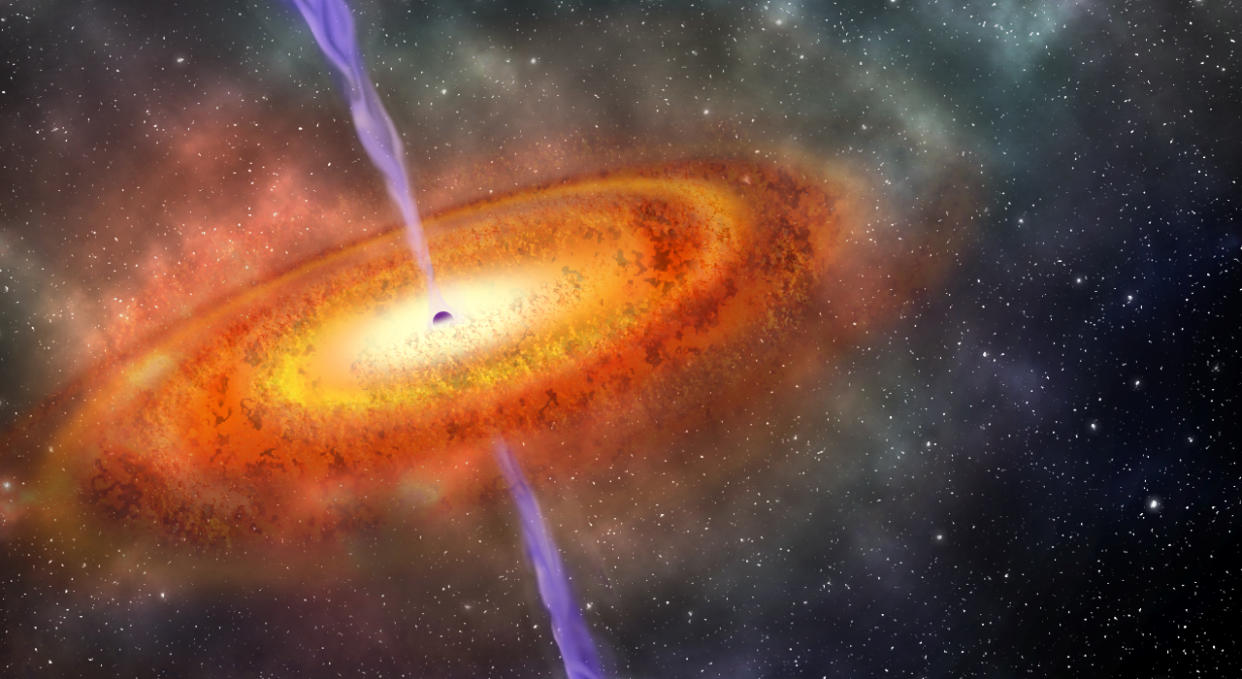Astronomers spot oldest-ever monster black hole, 800 million times heavier than the Sun

Astronomers have spotted the oldest, and furthest ever supermassive black hole – a matter-devouring monster 800 million times the mass of our Sun.
It’s astonishingly large for its young age, scientists say, as we’re seeing it just 690 million years after the Big Bang.
‘This black hole grew far larger than we expected in only 690 million years after the Big Bang, which challenges our theories about how black holes form,’ said study co-author Daniel Stern of NASA’s Jet Propulsion Laboratory in Pasadena, California.
Most popular on Yahoo News UK
Can you spot the snow leopard waiting to pounce on a herd of sheep?
Man accused of helping would-be terrorists by sharing Prince George’s details online
Migrant sex attacker who was jailed for too long is handed £110,000 compensation by judge
Fake sign language interpreter gatecrashes press conference to deliver nonsense message
‘Sadistic’ Catholic priest found guilty of abusing boys as headmaster of London school
For black holes to become so large in the early universe, astronomers speculate there must have been special conditions to allow rapid growth – but the underlying reason remains mysterious.
The newly found black hole is voraciously devouring material at the center of a galaxy — a phenomenon called a quasar.
‘Quasars are among the brightest and most distant known celestial objects and are crucial to understanding the early universe,’ said co-author Bram Venemans of the Max Planck Institute for Astronomy in Germany.
This quasar is especially interesting because it comes from a time when the universe was just beginning to emerge from its dark ages.
The discovery will provide fundamental information about the universe when it was only 5 percent of its current age.
Astronomers combined data from NASA’s Wide-field Infrared Survey Explorer (WISE) with ground-based surveys to identify potential distant objects to study, then followed up with Carnegie Observatories’ Magellan telescopes in Chile.

